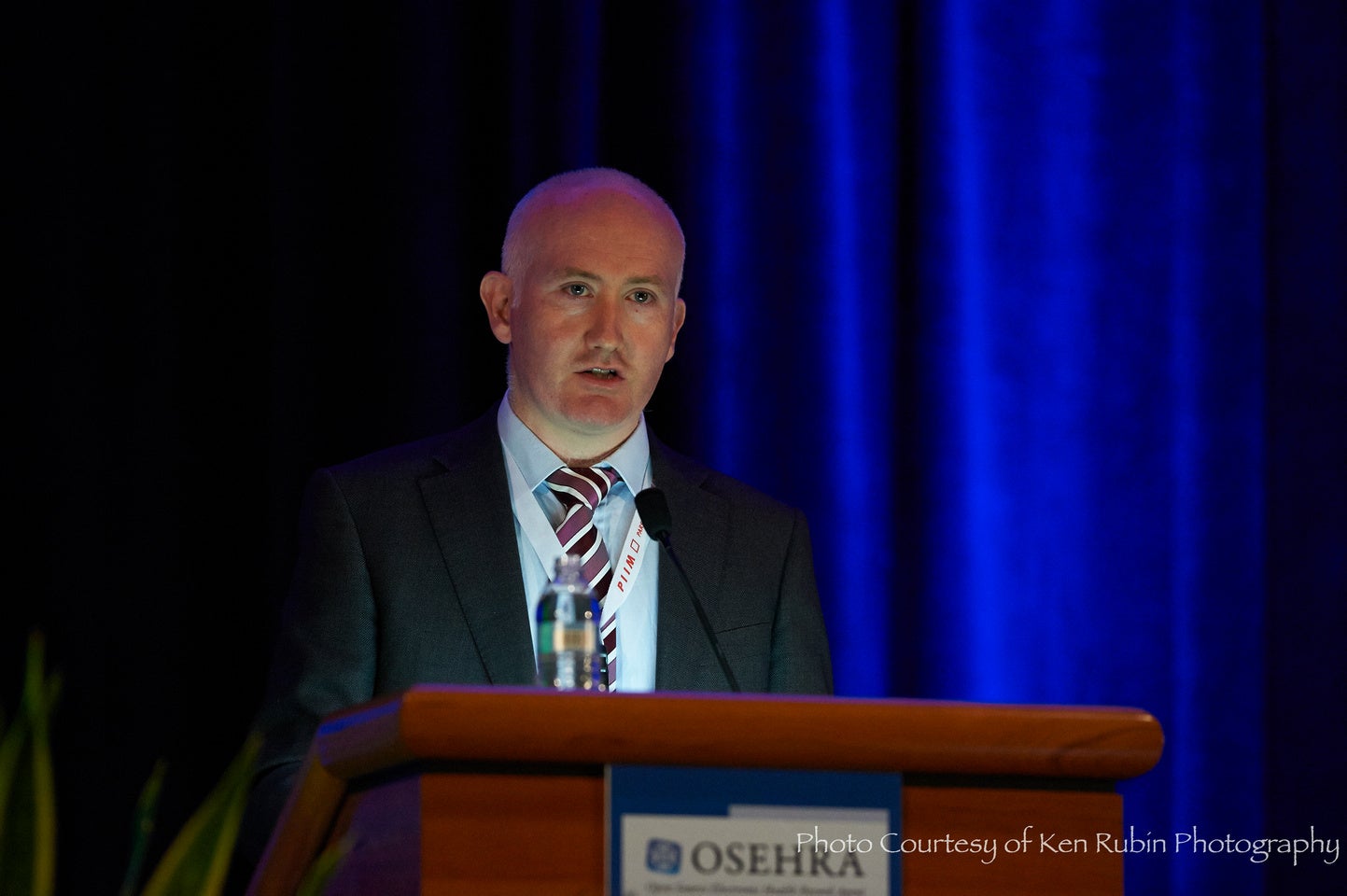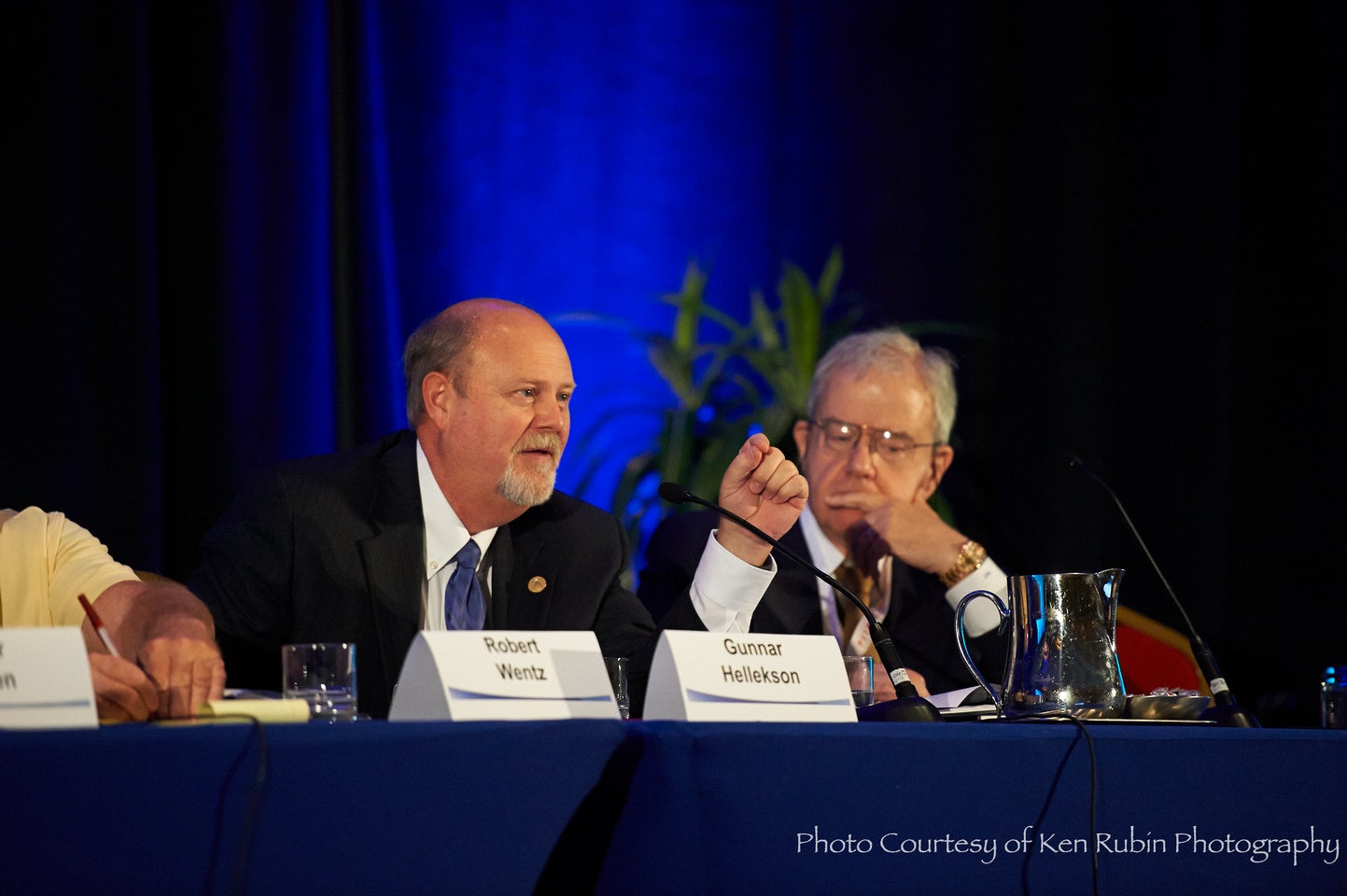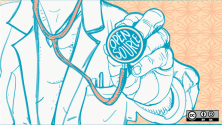On September 4 - 6 the open source electronic health records community came together at the 2nd annual OSEHRA Summit and workshop, in Bethesda, Maryland.
Day 1: tutorials on a variety of topics
Day 2: high-level presentations from members of the community with unique vantage points in the community
Day 3: diverse presentations, panels, and discussions on more specific topics

Photo credit, licensed under CC BY-SA: Ken Rubin Photography An attentive audience gathered at the meeting in a warm spirit of collaboration.
A few tutorials highlights from Day 1:
- Community Management, by Patrick Reynolds
- How to Contribute, by Wes Turner
- IP Management, by David Wheeler
Presentations from Day 2 opened with General (Ret) James Peake, M.D., Chairman of the Board of Directors OSEHRA. He introduced the theme...
"Open Source is like Water"
and used this Zen-like metaphor...
"Open source is all around us, even though we may not see it and notice it every day."
Stephen Warren, acting CIO of the Department of Veterans Affairs, said in his very engaging presentation...
"Open source is more like water. It is an economic and lifestyle change. Occasionally there may still be a need to buy bottled water, but in most instances the information is free flowing from the tap".
Warren reiterated the significance of VistA, the open source eletronic health record software, developed by the US Department of Veterans Affairs.
VistA at VA supports the care for over six million veterans, with 75 million outpatient visits and 680,000 inpatient admissions at more than 1,500 sites of care, including 152 hospitals, 965 outpatient clinics, 133 community living centers, and 293 Vet Centers. These facilities are run by over 244,000 employees including more than 20,000 physicians and 53,000 nurses and have affiliations with more than 1,200 educational institutions where more than 100,000 health care students receive clinical training from VA each year.

The OSEHRA Summit dedicated a lot of time to the future of VistA:
- The adoption of VistA by the National Health Services (NHS) in the UK, by Tony Shannon
- The financial benefits of VistA for private sector hospitals, in the specific case of VistA adoption at the Oroville Hospital in California, by Robert Wentz, CEO of the Oroville Hospital

Wentz explained in the most pragmatic, yet entertaining, way, how the adoption of VistA has brought simultaneous reductions of cost and increases of healthcare delivery to its patients. By empowering the hospital staff with solid access to data, the hospital is now able to identify sources of overcost as well as potential deficiencies of care, helping them to address them effectively.
Additionally, several presentations discussed open business models. Two of the most interesting to me were those given by:
- Gunnar Hellekson, Chief Technology Strategist, Red Hat
- Andrew Aitken, Founder and Managing Partner, Olliance Group
The last day of the Summit covered a range of topics including:
- open business models
- data analytics
- interoperability of clinical systems
- enterprise scale EHRs
Among the many talks presented during the Summit, two very closely represented the open source culture and sustainaibility of the community:
- Teaching M to Generation Y: This presentation shared the efforts for educating a new generation of developers on the M language and database so that they can maintain the millions of lines of M code that compose the large majority of both open source and closed source EHRs that are deployed today in hospitals around the US.
- Unmanagement and Peer-Production: This presentation discussed the change in mindset that is required to successfully support an open source community. Where peer-production replaces the old practices of industrial production, and therefore "unmanagement", the practice of coordinating activities through a network of collaborators, replaces traditional hierarchical management.






Comments are closed.